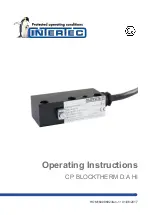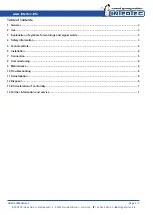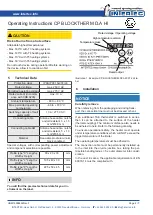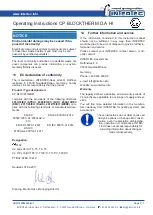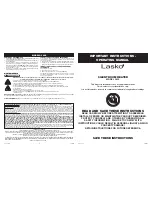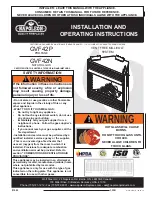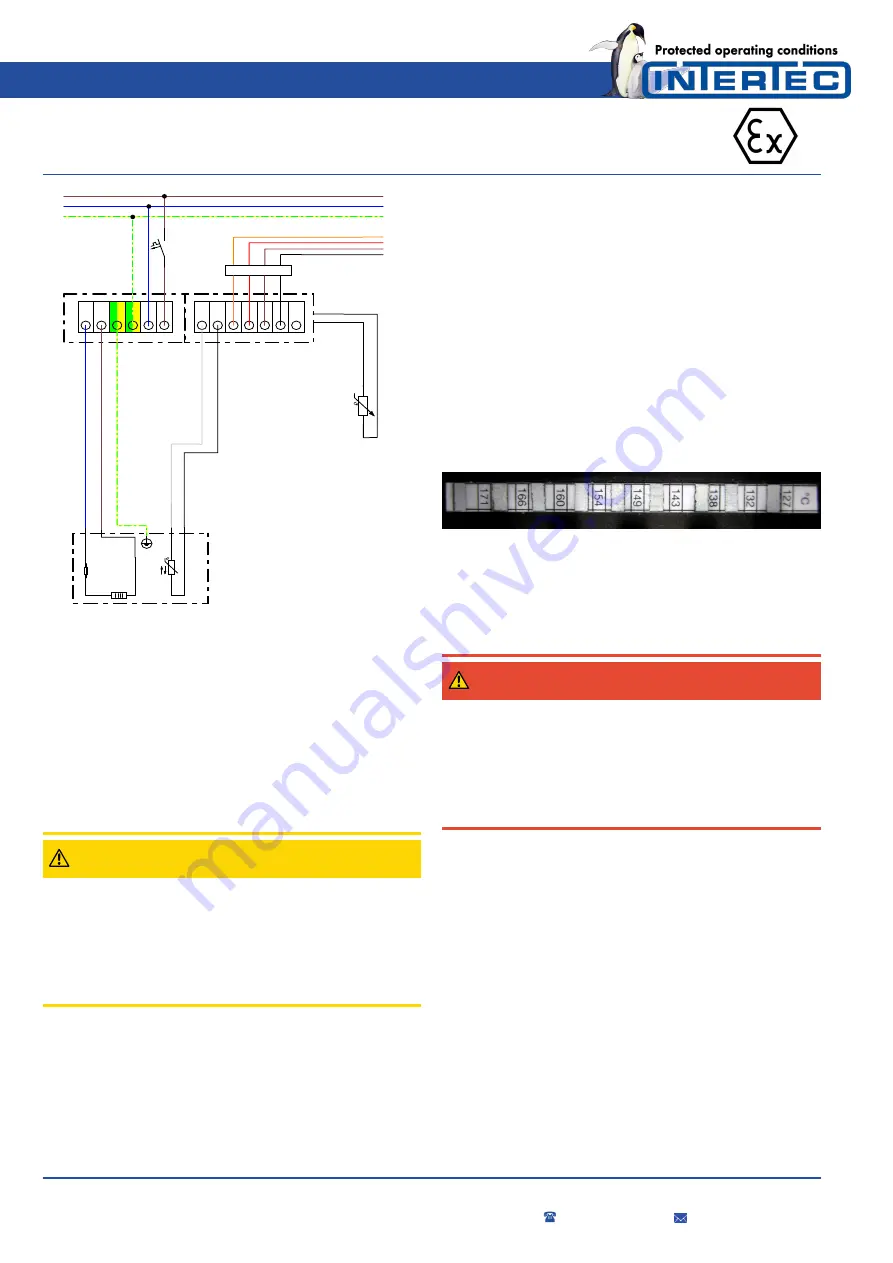
www.intertec.info
Operating Instructions CP BLOCKTHERM D.A HI
HOM160086923Ien-1
Page 6 / 7
INTERTEC-Hess GmbH · Raffineriestr. 8 · 93333 Neustadt/Donau · Germany ·
+49 9445 9532-0 · info@intertec.info
1
2
3
4
5
6
7
8
9
10
11
12
13
L
N
PE
NTC
RS 485
F1
TC DIGITAL
CP...THERM...HI
external sensor
br=brown bl=blue ye/gn=yellow/green bk=black gr=grey
bl br gn/ye
gr bk
+
A
B
Ground
Illustration 4:
Smart Heater HI System with TC ATEX
8
Commissioning
If the heater is installed in accordance with the notes in
the
Page 4]
section and
sections, then the radiator may be commis-
sioned.
CAUTION
Sufficient heat dissipation must be ensured.
Unauthorised covers must be removed as otherwise
there is the risk of the heater overheating.
The heating circuit is permanently disconnected by a
temperature melt fuse which can't be reset if these in-
stallation instructions are not adhered to.
9
Maintenance
The design of the device does not require any mainten-
ance.
Functional and safety test intervals can be freely selec-
ted by the operator in accordance with the applicable
regulations.
Repairs may only be carried out by the manufacturer in
the factory.
In the dust Ex area, the applicable requirements of EN
60079-17 and EN 60079-19 must be complied with.
10
Troubleshooting
If the heater fails, check the installation. Carry out a con-
tinuity test on the heating circuit. Pay attention to the
connection diagram and switching point of the thermo-
stat!
In the case of overheating, the thermal indicator (see fig-
ure) indicates a discoloration. If more than four fields are
blackened, the heater must be uninstalled and returned
to the manufacturer for inspection.
Illustration 5:
Temperature indicator
11
Deinstallation
Disassembly may only be carried out by a trained per-
son.
DANGER
Risk of fatal injury from electric current!
If contact is made with live components, there is the risk
of fatal injury.
For this reason, switch off the voltage supply, secure
against being switched on again and check that no more
voltage is present.
Disconnect connection line from the clamps and from the
connection socket, disconnect device from bracket and
remove it.
12
Disposal
Disassemble the components of the product, taking the
applicable local labour protection and environmental reg-
ulations into consideration and make sure that the com-
ponents are recycled:
• Scrap metal
• Send plastic elements to recycling
• Sort other components according to their material
properties and dispose of them.

